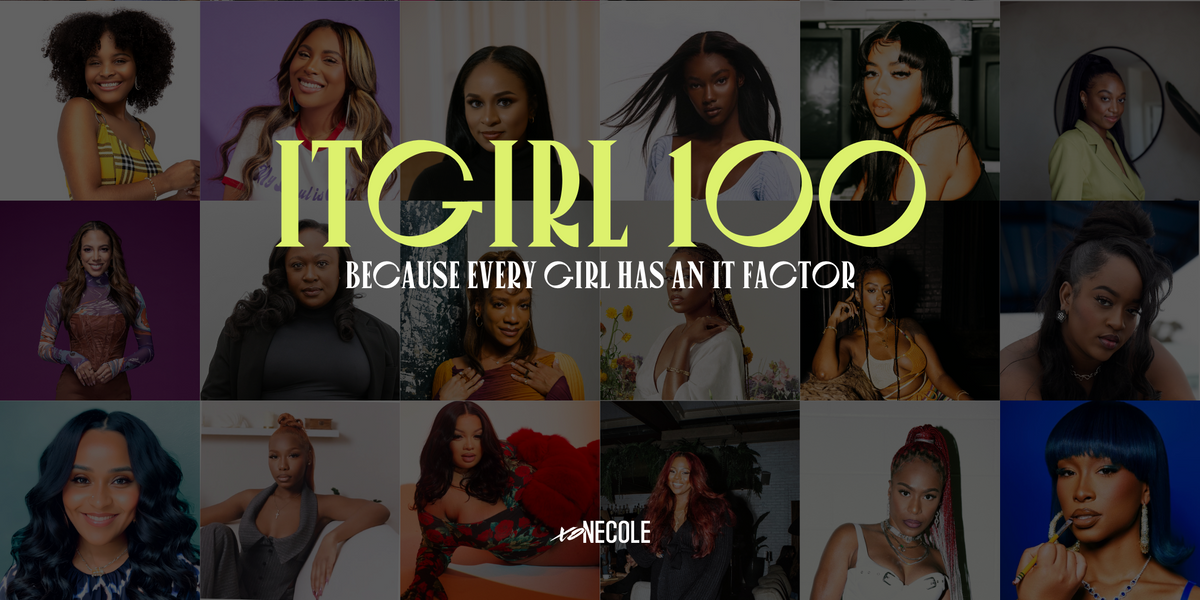
Five Reasons To Get A Brazilian Wax (That Don't Have To Do With Sex)
This post is in partnership with European Wax Center®
Getting a Brazilian wax has become a popular hair removal service recently, and it offers several advantages over shaving. While a bikini line wax snatches up the hairs that peek out from your bikini bottoms, a Brazilian wax removes all the hair down there, though you can opt to leave a strip or triangle. And while we are fierce advocates of doing whatever you want with your body hair, if you’re on the fence about a Brazilian bikini wax we have a few reasons why you should consider it.
Exfoliation Benefits
A Brazilian wax exfoliates the top layer of skin, removing dead skin cells, and leaving you with soft, buttery smooth skin. For the best results, head to a professional waxing center like the European Wax Center where an esthetician will gently walk you through the process - especially if it’s your first time. (Bonus: you’ll get your first wax on the house!) To continue exfoliating at home, consider taking home a soothing body polish that can be used daily to keep skin smooth between waxes.
Fewer Bumps
Those of us with curly hair are more likely to have razor bumps after shaving (which happens when the hair starts growing back under the skin) but waxing removes the hair from the root, decreasing the likelihood of ingrown hairs. The experts at European Wax Center use Comfort Wax® sourced from Europe that skin-soothing ingredients like Vitamin A to aid in cell reconstruction. After your reservation, you can take home the Ingrown Hair Serum or the Ingrown Hair Wipes - both products can be used twice a day to treat and prevent ingrown hairs.
Finer Hair
When you wax often, the hair is likely to grow back thinner and finer. Instead of the coarse hairs that grow in after shaving, waxing allows your hair to grow back finer each time that you wax. Though the first waxing session may be uncomfortable (consider taking some ibuprofen before your session), the process becomes more comfortable over time. Also, since waxing removes hair at the root, the experts at European Wax Center report that by your third wax, your hair will be growing at the same rate, so you can also forget about patchy, uneven growth or stray hairs!
Longer Lasting Results
Let’s face it, we’re all super busy, but the good news is getting a Brazilian wax can last up to four weeks. European Wax Centers also offer a line of SLOW body products that naturally slow hair regrowth at the root. Made with narcissus bulb extract, the collection includes body polish, body wash, and a body lotion that can minimize hair growth, helping you go even longer between sessions. We consider that a win!
Peace of Mind
Getting a Brazilian wax means you're good to go anytime, and there’s no need to panic if you get a last-minute invite to hang poolside with your friends. But if you do need a reservation asap, there are over 850 locations across the country and most European Wax Centers are open between 8 a.m. and 8 p.m. with most locations open on Sundays. The best part? Your EWC wax specialist will have you in and out in 15 minutes or less!
ItGirl 100 Honors Black Women Who Create Culture & Put On For Their Cities
As they say, create the change you want to see in this world, besties. That’s why xoNecole linked up with Hyundai for the inaugural ItGirl 100 List, a celebration of 100 Genzennial women who aren’t afraid to pull up their own seats to the table. Across regions and industries, these women embody the essence of discovering self-value through purpose, honey! They're fierce, they’re ultra-creative, and we know they make their cities proud.
VIEW THE FULL ITGIRL 100 LIST HERE.
Don’t forget to also check out the ItGirl Directory, featuring 50 Black-woman-owned marketing and branding agencies, photographers and videographers, publicists, and more.
THE ITGIRL MEMO

I. An ItGirl puts on for her city and masters her self-worth through purpose.
II. An ItGirl celebrates all the things that make her unique.
III. An ItGirl empowers others to become the best versions of themselves.
IV. An ItGirl leads by example, inspiring others through her actions and integrity.
V. An ItGirl paves the way for authenticity and diversity in all aspects of life.
VI. An ItGirl uses the power of her voice to advocate for positive change in the world.
Let’s make things inbox official! Sign up for the xoNecole newsletter for daily love, wellness, career, and exclusive content delivered straight to your inbox.
These 11 Married Couples Share Their Keys To Long-Term Marital Success
The late actor Audrey Hepburn once said something that I think a lot of married couples who have at least 10 years under their belt will agree with: “If I get married, I want to be very married.” In my mind, this means very committed, very complementary, and very willing to go the distance — otherwise, what’s the point?
Really, what’s the point?
Thing is, with the divorce rate still being higher than it ever should be (for the record, a husband is not a boyfriend, and a wife is not a girlfriend; a marriage is serious business, y’all) and acting married being praised (or at least acknowledged) more than actually being married seems to be — folks who 1) are married and are looking for some hacks that will help with relational longevity or 2) want to be married someday and want insight on how to make their future marriage last are constantly seeking truly beneficial material.
Can you Google articles with random bullet points? Sure. And I’m not discouraging it. Every little bit of wisdom that you can pull, I fully support. However, the reason why I like to do articles like this one from time to time is there is something to be said from hearing real talk from multiple sources on the same topic who have some solid wisdom and knowledge on a particular topic.
Today? 11 married couples who were willing to talk about how they’ve been able to make it to several wedding anniversaries with a smile on their face and no regrets for choosing who they chose. Let’s all sit at their feet for just a moment.
*Middle names are always used in my content that’s like this so that people can speak freely*

Getty Images
1. Kyle and Adrienne. Married 12 Years.
Kyle: “Some of your readers aren’t going to want to hear this but it’s worked for my marriage: people need to lower their expectations sometimes; I mean, men and women. We go into marriage with stuff that movies told us, social media told us, friends who are always single told us about what we should expect from someone, and then want to fault the person when they’re not what we made up in our head. Everyone should have standards but if you’re expecting your spouse to be some living version of a fairy tale character, you’re going to be disappointed almost every day of your life. Drop those expectations some and watch your relationship be a lot less stressful.”
Adrienne: “Talk to people who respect your man about your marriage. I’ve never believed that you shouldn’t ever go to anyone when you need some support. Even the Bible says that there is safety in wise counsel [Proverbs 11:4]. Too many women talk to women who don’t respect men, in general, let alone their husbands, and so that’s where things go left. Sometimes, you need an ‘outside in’ perspective. But if that woman is always taking shots at men, doesn’t respect marriage, or isn’t someone who holds your man in high regard, don’t ask her for advice. Really, you should ask yourself why you’re friends with her at all.”
Shellie here: I’m big on engaged and married couples having a “village” of sorts for their relationship, too. Check out “Why Every Engaged Couple Needs A 'Marriage Registry'” to get a good idea of what I mean.
2. Levi and Paulette. Married for 15 Years.
Levi: “Some of you have probably heard of the 7-7-7 rule. It’s where couples go on a date every seven days, have a weekend getaway every seven weeks, and go on a romantic trip of some sort every seven months. My wife and I do the 2-2-2 rule instead because sometimes our schedule and budget make ‘7’ difficult. It has gotten easier since Shellie told us about the sex jar. Bottom line, if you’re waiting for time to just open up to be with your spouse, that ain’t gonna happen. Schedule intimacy, including sex. Prioritizing it is better than saying you’re gonna be spontaneous and…never are.”
Paulette: “Initiate sex, dammit. When Shellie told us that men initiate sex most of the time, and then I thought about how often I used to push my husband away whenever he did it — I never really thought about how that made him feel until I put myself in his shoes. We’ve got to stop having all of this understanding for why women cheat when it comes to them not feeling desired or not getting attention when we’re the same way to our husbands. Your marriage isn’t ‘Young and the Restless’, where you’re just supposed to wait for your man to make the move. If you want to feel wanted, do the same thing for him.”
Shellie here: What’s a sex jar, you ask? You can read more about it via “5 Reasons Why Every Married Couple Needs A Sex Jar.”
3. Matthew and Gaia. Married for 17 Years.
Matthew: “Reenact some of your favorite times together. My wife and I do that semi-often. We’ll go back to where we had our first date, or we’ll go back to the hotel where we had some of the best sex before. Bringing back memories of when you felt the best together can give you the motivation to stay together to create some new memories to ‘play out’ later on.”
Gaia: “If you want to ‘mom your husband,’ you need to have kids — or at least get a dog! I didn’t realize how bossy I was until I got married. It’s because I saw my mom be that way with my dad. In my eyes, I thought that’s what love looked like until I watched how my in-laws were. They don’t try to change each other, and they definitely don’t make any demands. They’re very polite. I think a lot of married people are rude to their partner. Don’t be that.”

Getty Images
4. Joseph and Carletta. Married for 10 Years.
Joseph: “Go to therapy for your childhood. I’m dead serious. No one is going to show you yourself like your wife will, and I realized that a lot of my hang-ups came from unhealed childhood stuff. It’s hard to be an adult in your marriage when you’re still emotionally a kid in a lot of ways. If you’re at the point where you think therapy is needed, go alone and deal with your childhood first. It did miracles for me and mine.”
"No one is going to show you yourself like your wife will, and I realized that a lot of my hang-ups came from unhealed childhood stuff. It’s hard to be an adult in your marriage when you’re still emotionally a kid in a lot of ways."
Carletta: “Meditate together once a day. Even if it’s just for 5-10 minutes, you need to carve out a moment to be mindful, focus on each other, and slow the world down. [Joseph and I] have been doing it for a couple of years now; it’s totally changed the way we communicate. Meditation reminds us to put each other first; that if we’re focused on each other, we can take on…whatever.”
5. Zeke and Rachelle. Married for 12 Years.
Zeke: “An argument is not a fight and a debate is not an argument. Learn that and you’re home-free. That’s all I got.”
Rachelle: “That advice that you just got? That sums up what it’s like to live with my husband. He’s very cut-and-dry, direct, and not wordy. That used to bug the hell out of me until I realized how wordy I was and then accepted that I wouldn’t want ‘two of me’ in the house [LOL]. He’s right. You can have a difference of opinion, and it be a debate. You can not find a middle ground on something and it turns into an argument. Neither of those is a red flag. It just comes with being with someone who is as much of an individual as you are.”
6. Taurus and Madison. Married for 22 Years.
Taurus: “Be prepared for your partner to change — not a couple of times, quite a bit. And when they change, that alters the relationship because now it’s not the person you stood with on your wedding day; it’s someone else. People get divorced so much because they are inflexible; they expect their spouse to never switch up and that’s just not how life is. If you’re rigid, controlling, or don’t know how to adjust, you don’t need to marry anybody. You’re gonna be miserable, and so will they.”
Madison: “Pray before sex. Before my husband and I got married, we had quite a bit of sexual history that caused us to do some comparing, and that led to resentment. In marriage, we had to adjust to how it’s more than just what we’re getting from another person. Married sex comes with so much more spirituality and responsibility. Prayer before sex reminds us to see it from a spiritual lens — and that makes the experience more intense and sacred. It might sound weird at first. Just try it. I don’t think you’ll regret it at all.”
"Married sex comes with so much more spirituality and responsibility. Prayer before sex reminds us to see it from a spiritual lens — and that makes the experience more intense and sacred."

Getty Images
7. Karl and LaTasha. Married for 9 Years.
Karl: “Check in with your partner twice a day. In the morning before leaving the house and at night before going to sleep. If you work outside of the home, a lot can happen during the course of one day, so you shouldn’t assume that the person you left in the morning is who you are coming home to. I don’t mean sharing each other’s schedules or to-do lists. I mean, asking your spouse, ‘How are you doing? How are you really doing?’. It’s a smart way to take note of their mood and needs so that you are never blindsided.”
LaTasha: “Give each other some privacy. I have never been the kind of woman to go through a man’s phone, and I won’t start. If you think that you have to be a detective in your relationship, why are you in it in the first place? I know that Karl would give me codes and passwords if I wanted them because we’ve talked about it all before. Knowing that he would is enough for me. Marriage is an institution, but damn, it shouldn’t feel like jail.”
8. Thomas and Wynter. Married for 15 Years.
Thomas: “Ask your partner what their sexual needs are. Never assume that they haven’t changed because if we all agree that we are constantly growing and evolving as people, why would sex be exempt? Don’t personalize what they say about it either. All of us have sexual fantasies and interests that we keep to ourselves because we don’t know what our partner will think or ‘cause we think that they will create stories in their head about what made us think that way. I’ve learned that intimacy is feeling okay with sharing the deep stuff. The more comfortable a man, especially, is with doing that, the better the sex will be for everyone because talking about stuff like that is like taking down some walls.”
Wynter: “It’s okay to take one vacation a year with your girls and one by yourself. Just don’t go with people who don’t have the same standards as you, and as far as your solo venture, it doesn’t need to be longer than a long weekend. One thing that they don’t tell you about marriage is how there are times when you will feel like it is monotonous because of the routine of everything. A girls’ trip reminds you to get back to you outside of being someone’s wife or mom, and the trip alone is when you can sit around and do whatever you have to negotiate most of them. And yes, your man should be given the same courtesy.”

Getty Images
9. Allen and Yvette. Married for 11 Years.
Allen: “STOP. BRINGING. UP. OLD. SH-T. SH-T. Nothing creates walls in a marriage more than you telling someone that you forgave them, and then the minute something else happens, here you go with the rap sheet of wrongs. Forgiving someone means that you are pardoning them, and that’s not what you’re doing if you’re constantly holding stuff over their head. One thing that marriage will show you is how bad of a forgiver you are. Most people suck at it, if we’re gonna be real about it.”
Yvette: “I already know that some women are going to assume that my man must’ve done something to say all of that (LOL). He’s a much better forgiver than I am, believe it or not. The real plot twist is, what gets on his nerves more than anything, is when I bring up stuff that he’s forgiven me for. Allen is the kind of man [who] hates to live in the past. I’ve grown a lot because of that. I think my advice would be to stay focused on solutions and tomorrow instead of problems and yesterday.”
Allen: “Sh- t, that’s bars, babe!”
Shellie here: INDEED.
10. Brennton and Danyelle. Married for 16 Years.
Brennton: “Why anyone who is trash at forgiving would get married is beyond me. It’s delusional to the nth degree to think that you are worthy of forgiveness and others aren’t — or that what you do isn’t ‘as bad,’ and that’s why you deserve forgiveness and others don’t. My wife and I have a lot of time under our belts. I’m here to tell you that there will be something, daily, that you will need to forgive your partner for on some level. If you can’t see yourself being open to that, marriage simply isn’t for you.”
Danyelle: “I don’t know who taught so many of us that being passive-aggressive will get us what we want, but it’s a damn lie. If something is wrong, stop saying ‘nothing’ when your man asks you what’s up because, if you’ve got a man like mine, he’s gonna say ‘Okay’ and go on about his day. Brennton often says that my refusing to speak isn’t his responsibility, it’s mine. That used to piss me off because, deep down, I knew that he was right. Oh, and chill on the grudge-holding too. With guys, that’s not going to get you anywhere either.”
11. Christopher and Yvonne. Married for 26 Years.
Christopher: “Have more loyalty for your spouse than you do your closest friend. Too many people don’t think like that. If you’ve got a friend since college, you’ve been through some things and you’ve learned to forgive and move past it. If you can’t see your wife or husband in this way, why did you get married? You should never have more grace for someone who you didn’t take vows with; that’s ludicrous. Before anyone else, I’m going to prioritize reconciling with my wife. It’s because I value her more than anyone. That’s what marriage is.”
"Before anyone else, I'm going to prioritize reconciling with my wife. It's because I value her more than anyone. That's what marriage is."
Yvonne: “Even if you’re not about ‘traditional gender roles,’ discuss what the expectations are for the home. People don’t divorce over cheating as much as getting sick of beard clippings in the bathroom sink or cars that look like pocketbooks. When you sign up for marriage, you are doing daily life with another person. Articulate your expectations. Listen to theirs. Be flexible until you both can make it work. Do that, and you’ll look up, and it’s been 20 years already.”
____
Gems. Pure gems, y’all.
You know, popular consultant Barbara De Angelis once said, “Marriage is not a noun; it’s a verb. It isn’t something you get. It’s something you do. It’s the way you love your partner every day.” And love? Love is a choice.
And so, whether you’re married, engaged, or simply desire marriage in the future, hopefully, these tips will help you to choose how you love your spouse (or future spouse)…better.
Let’s make things inbox official! Sign up for the xoNecole newsletter for daily love, wellness, career, and exclusive content delivered straight to your inbox.
Featured image by Jasper Cole/Getty Images









